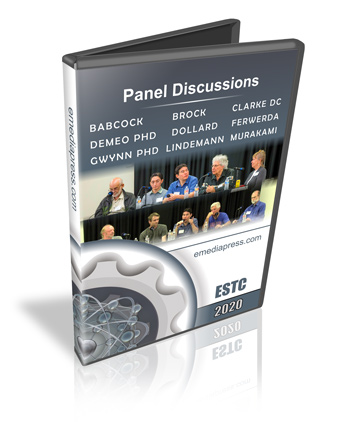Here are some updates on the MWO – this is only for those of you who:
1. You already purchased one or more MWOs.
2. You’re on a waiting list and you may or may not have pre-paid for a system.
Progress working with fabrication companies to automate the various parts of the system is a very slow process but nevertheless, we are succeeding. The economy is so robust that 100% of every company we have dealt with is more busy than they ever have been.
They are doing their best to fit us in even though our needs are small compared to the monster jobs they’re doing for others. They also have been very forgiving with our persistent push-push-push and they do see a long term mutually beneficial relationship with us since there are quite a few other devices we wish to manufacture. We’re also fortunate all these companies are right here in Spokane.
Please take a look at what we have coming together compared to where we started not that long ago! We think you’ll like it…
PULSE MODULATOR CASES
We have a local company that has created the cases for the pulse modulators and they’re beautiful! This was a huge step in moving towards turn-key production as the early units were all hand fabricated from scratch one at a time. We’ll be able to order these well ahead of time for future batches.
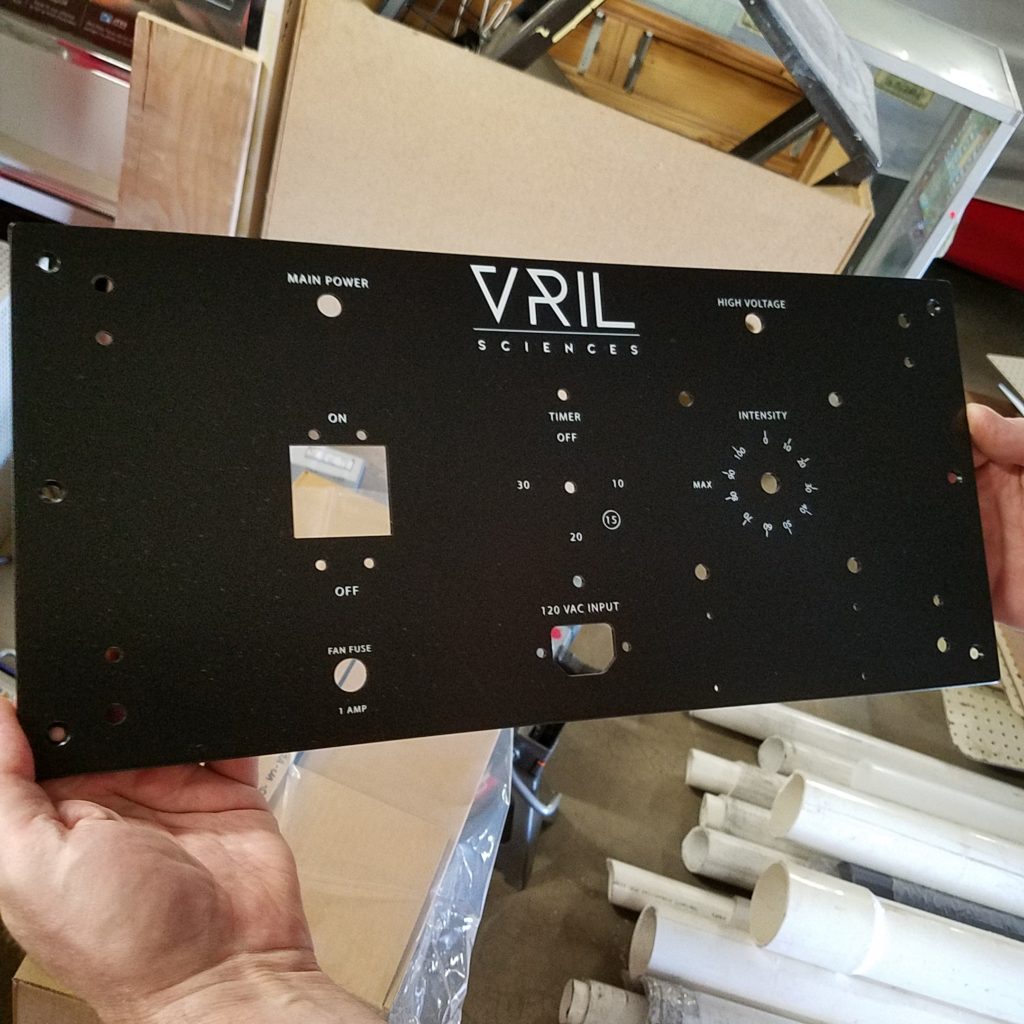
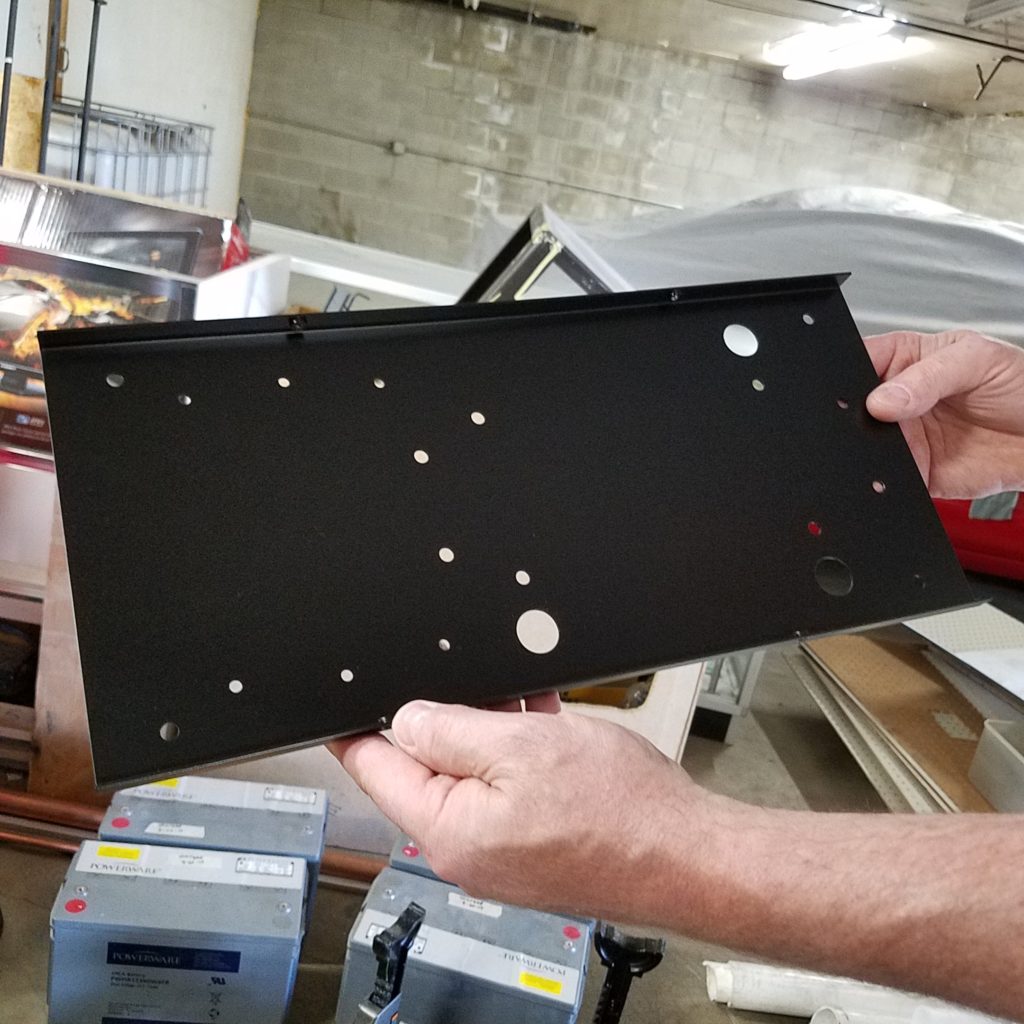
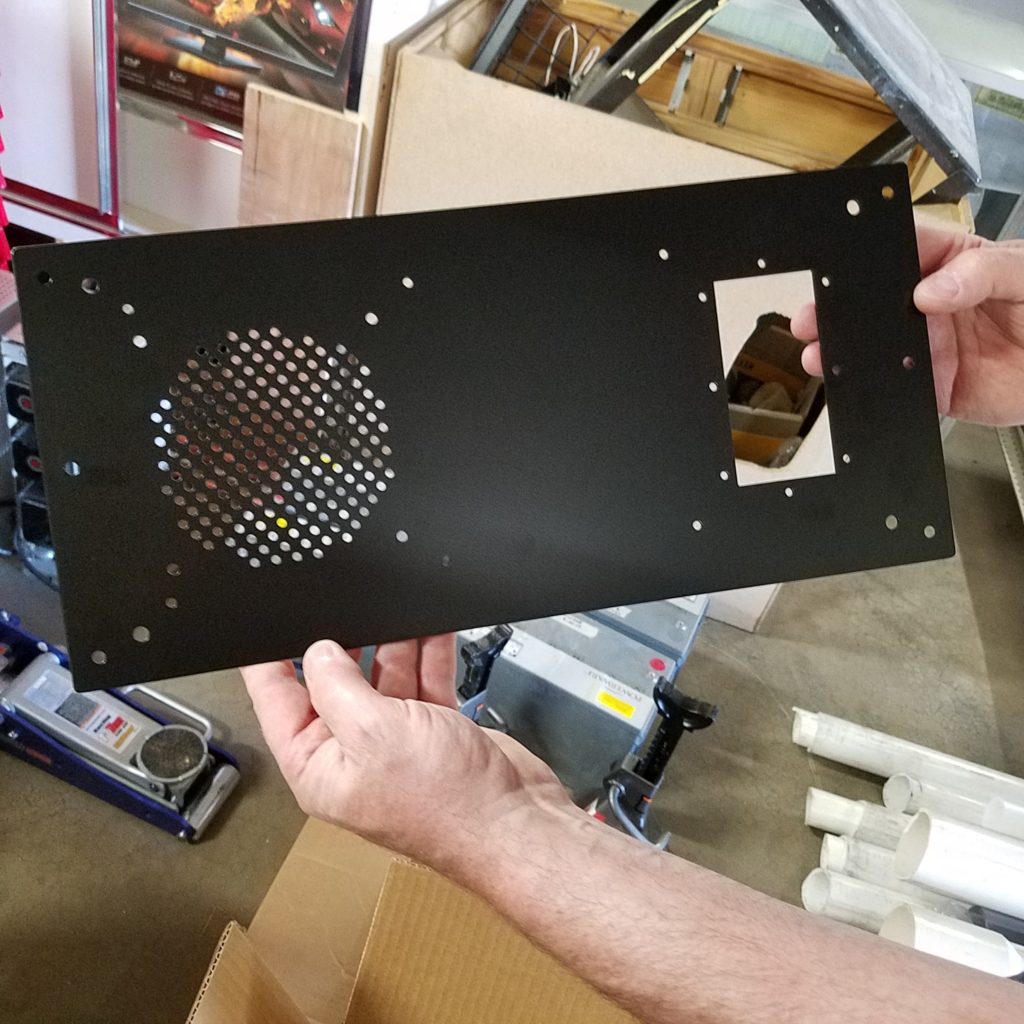

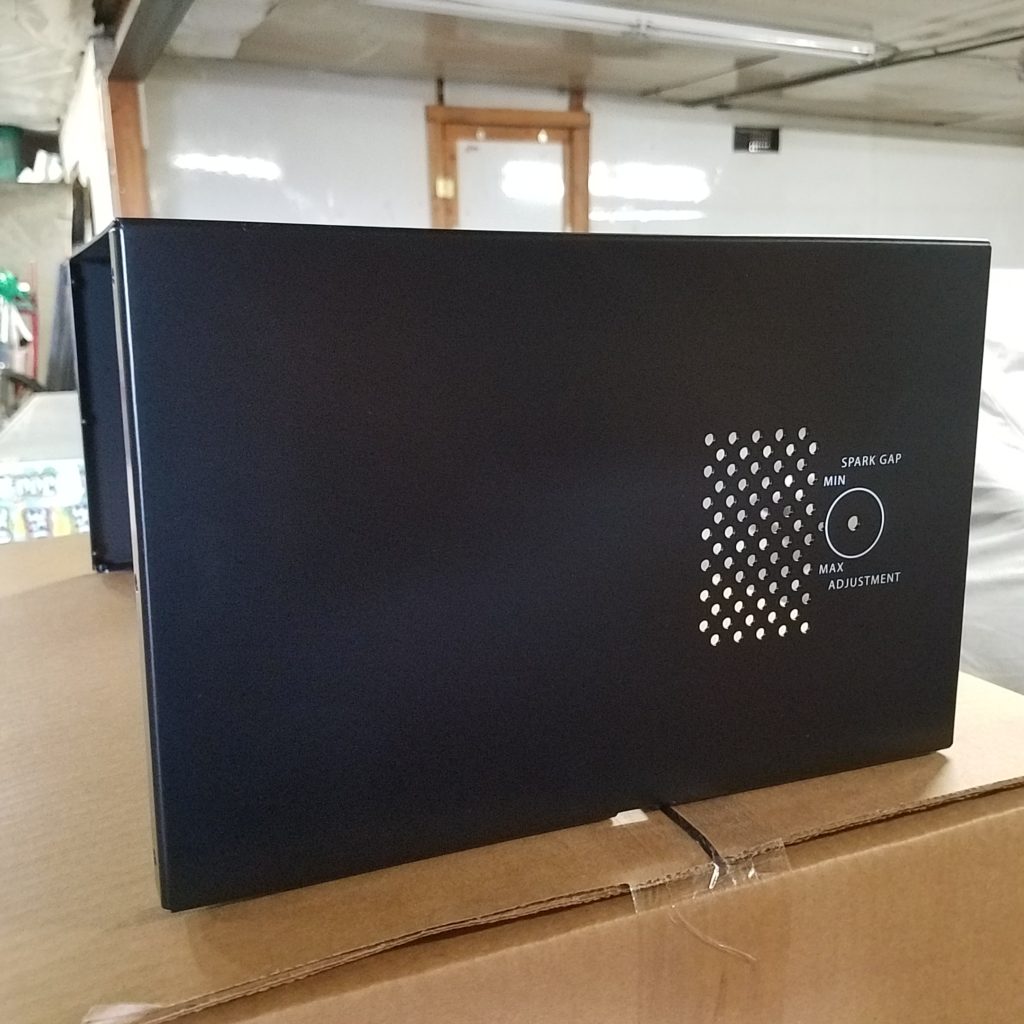
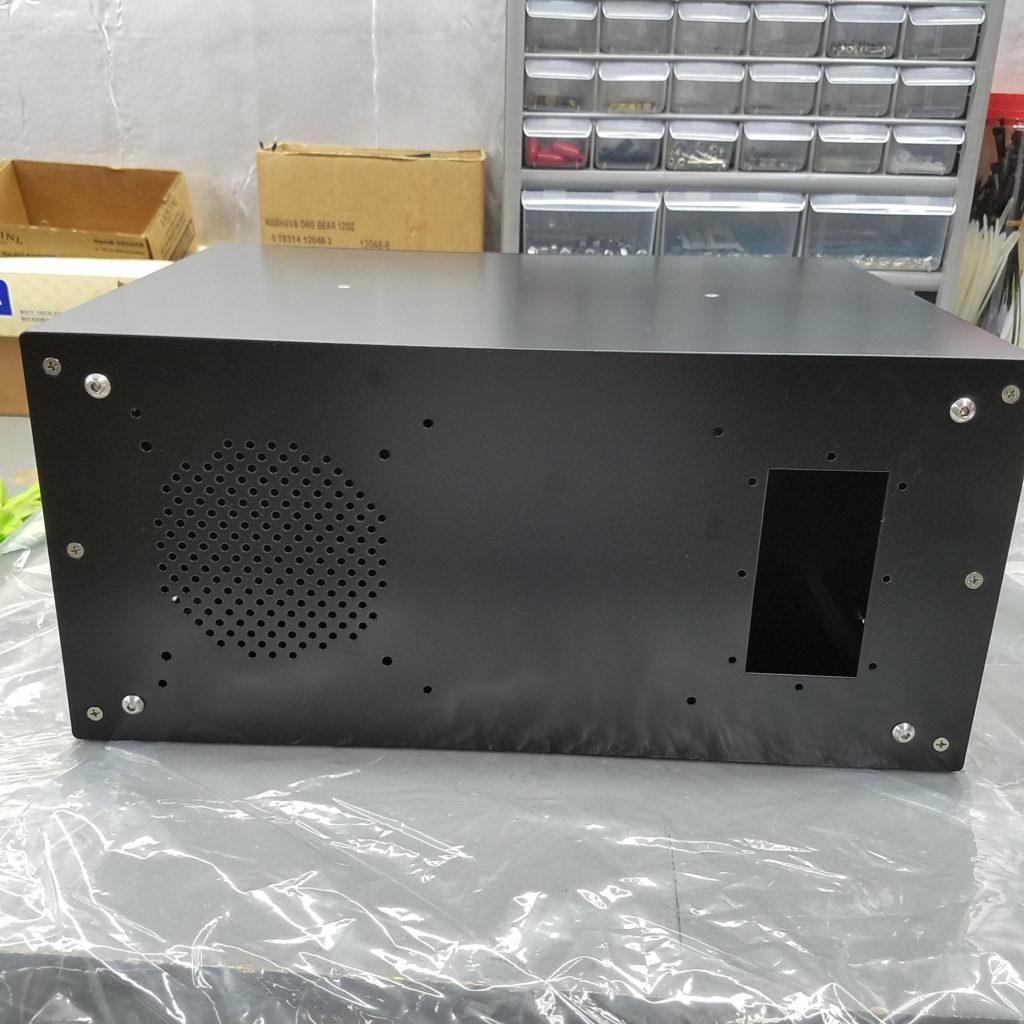

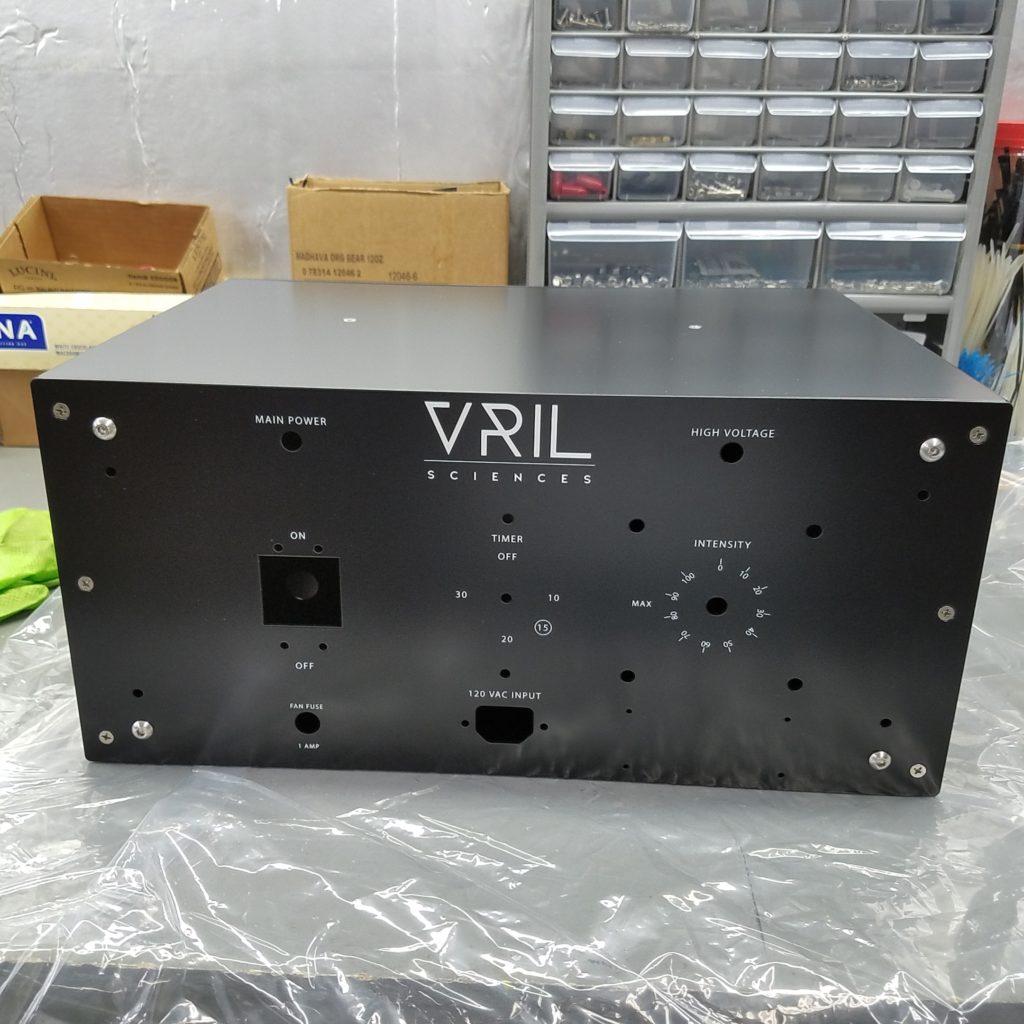
The picture below is the military style data tag that will go directly below the variac intensity dial – MD means Modulator, 3A is the prototype number and UA means invisible rays – this is the actual military designation for this kind of unit – and 39 pounds – the original prototype is about 55 pounds and the dimensions are larger!!
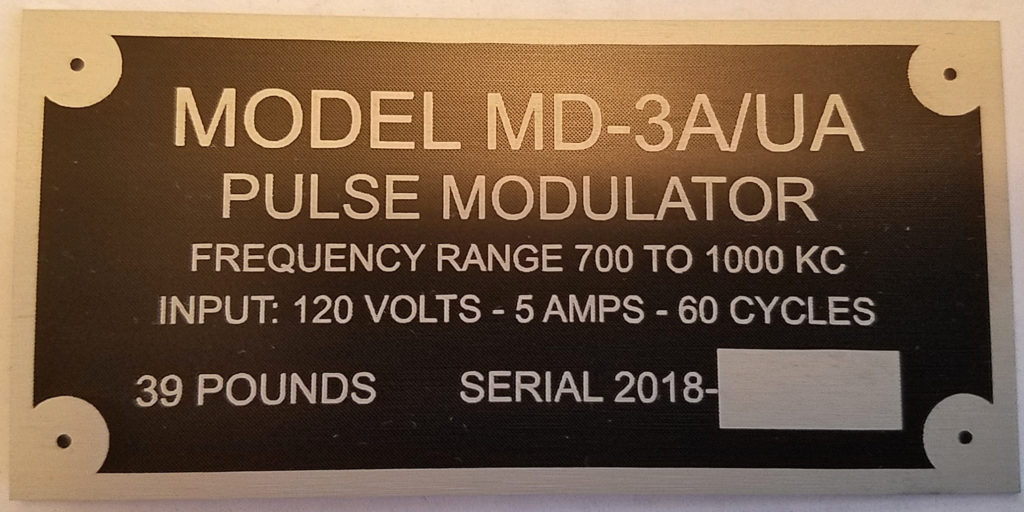
SPARK GAP BOXES, MOUNTING PLATES, COPPER BARS AND TUNGSTEN RODS
Not too exciting as far as pictures but suffice to say that we have all of this automated now and the copper and tungsten are now 1/4″ thick instead of 1/8″.
COILS & STANDS
We have the stands design down that is much simpler and stronger to build and this will allow us to also go up in diameter for the coil forms eventually. A larger diameter with fewer turns to keep the same wire length gives us better frequency response – bottom line, they will perform much better and they will be more efficient.
Also, the coil forms are much shorter. When the secondary is too far from the antenna, there are corona problems and we have solved this. You can see that the secondary (skinny wire) next to the right hand is butted up right against the end cap meaning it is as close to the antenna as possible. Since the antenna is like charged, corona will be subdued since it will not want to leave the end of the secondary and move out into space since the antenna repels it. This is using the antenna ring as a “gradient shield”, which is commonly used on high voltage power lines, but very rarely are these practices implemented on anything like this.
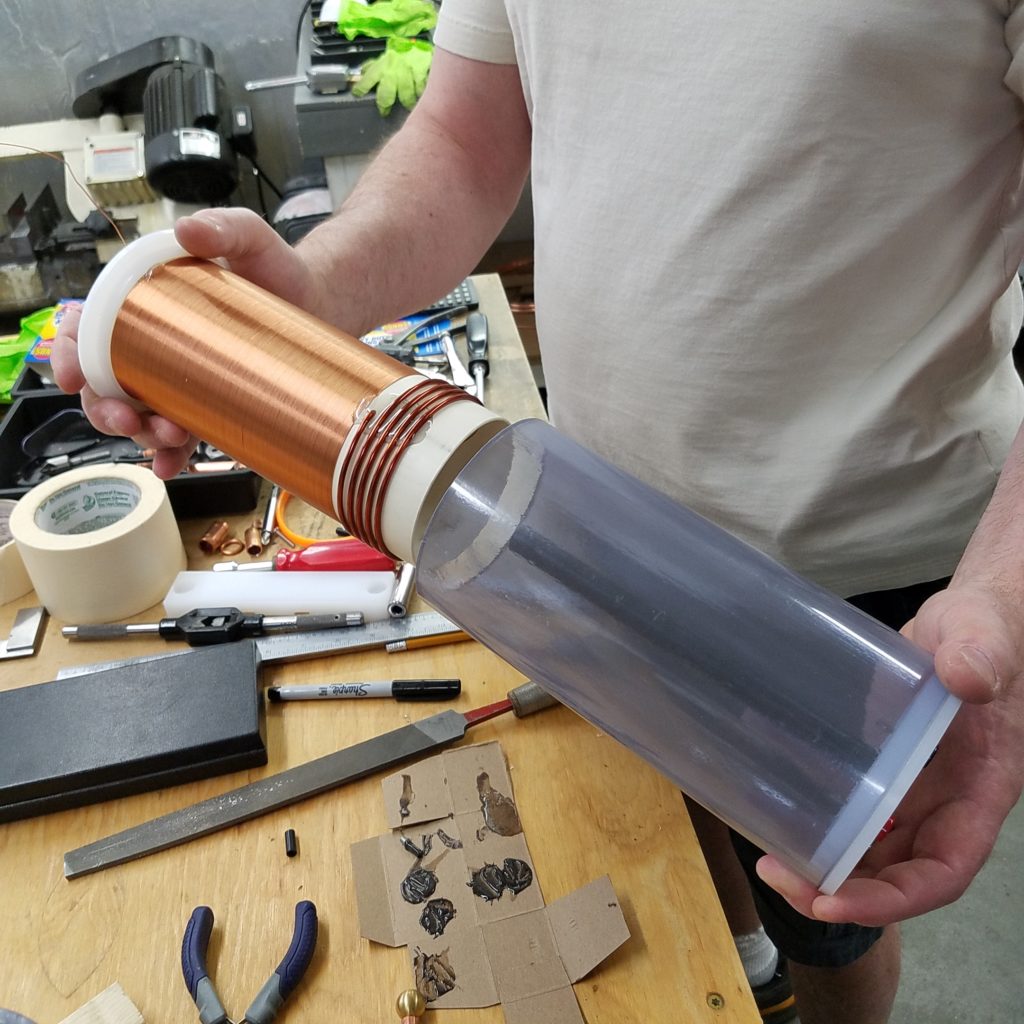
The original material for the clear tubes was acrylic but that was way too brittle. These clear tubes with the blue tint are ABS and are practically indestructible in this application. They’re also much more resistant to ozone.
The original units had 15,000 volt transformers and we quickly found that was too strong. We went down to 9,000 volt transformers and with the tuning improvements of the coil and a few other enhancements, we are finding that 9,000 volts is still too strong so if you receive a 9,000 volt unit, it is recommended to keep it around 50% max.
We are moving toward 6,000 volt transformers and this will let you use the full range of the variac without worrying about overpowering it even if you turn it up to 100%.
Overpowering doesn’t mean it will break the unit, but it does cause a lot of dielectric stress in the windings and can cause them to breakdown prematurely. This would be like having too much water pressure in a pipe that isn’t suited for that kind of pressure. With too high of voltage going into the primary (fat wire) on the coils, the dielectric stress is too much on the secondary windings and it isn’t good for the wire, plastic, etc. and is simply not necessary. This is really a subtle energy machine even though the pulse modulator is not very subtle.
The stands will look pretty much like the ones in the pictures below. You can see how the secondary (skinny wire) is a few inches from the antennas and the newer ones are butted right up against the antenna.
The original ones were probably 4+ inches from the antennas and there was too much corona. Anyone that has the older coils will receive replacements at no extra cost when we are caught up. For most people, it will take a long time before any issues arise. For anyone running these for many hours a day, that will speed up the issues but again, for most people running these once or twice a day, it will take a few years:
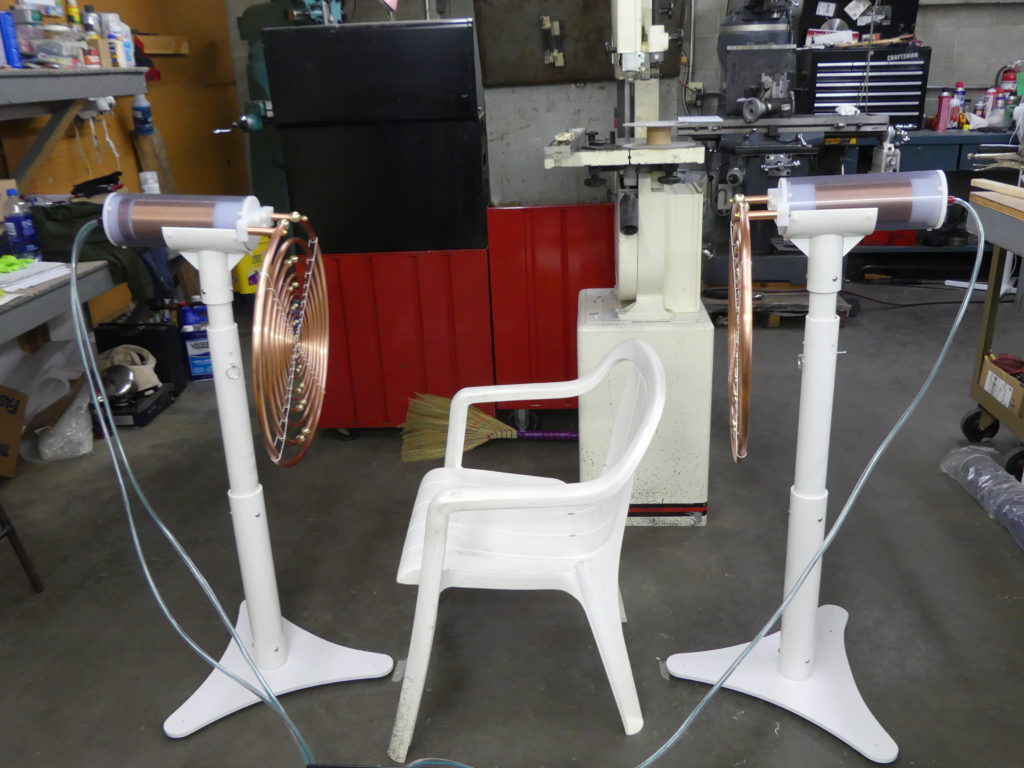
ANTENNAS
It is obvious why hardly anyone is building these on their own. The antennas are a whole project on their own and unless someone has all the tooling, it will take them forever to build a unit. The lacing with the silk string is the #1 most time consuming process especially getting to the inner rings. There is no advantage to this silk and sticking with a method that is 75 years old is not useful, helpful or necessary. It looks nice, but there are too many drawbacks.
We have a company that will be automating the ring bending process for us and this is going to save a massive amount of time. Also, instead of lacing the strings, we’re going to be using some plastic strips that clamp the rings together. The plastic is gray and is not the most beautiful, but it is CPVC, which is a special PVC only available in gray and is very resistant to ozone – one of the best materials for this purpose.
We calculated this all out with Eric Dollard and since the total thickness of this material on all 4 quadrants is less than 1% of the total circumference, there will be no significant change in the frequency response. In other words, going this route will enable us to keep the same high performance.
Check it out – looks really good!! The rings are more stable and do not move or swing in relation to each other like they do with the silk and they are able to be assembled in a fraction of the time.
The rings are without balls and the ends the tubes are not cut to fit the balls yet, this is just to test the test strips we had cut for us to make sure they are perfect, and they are.
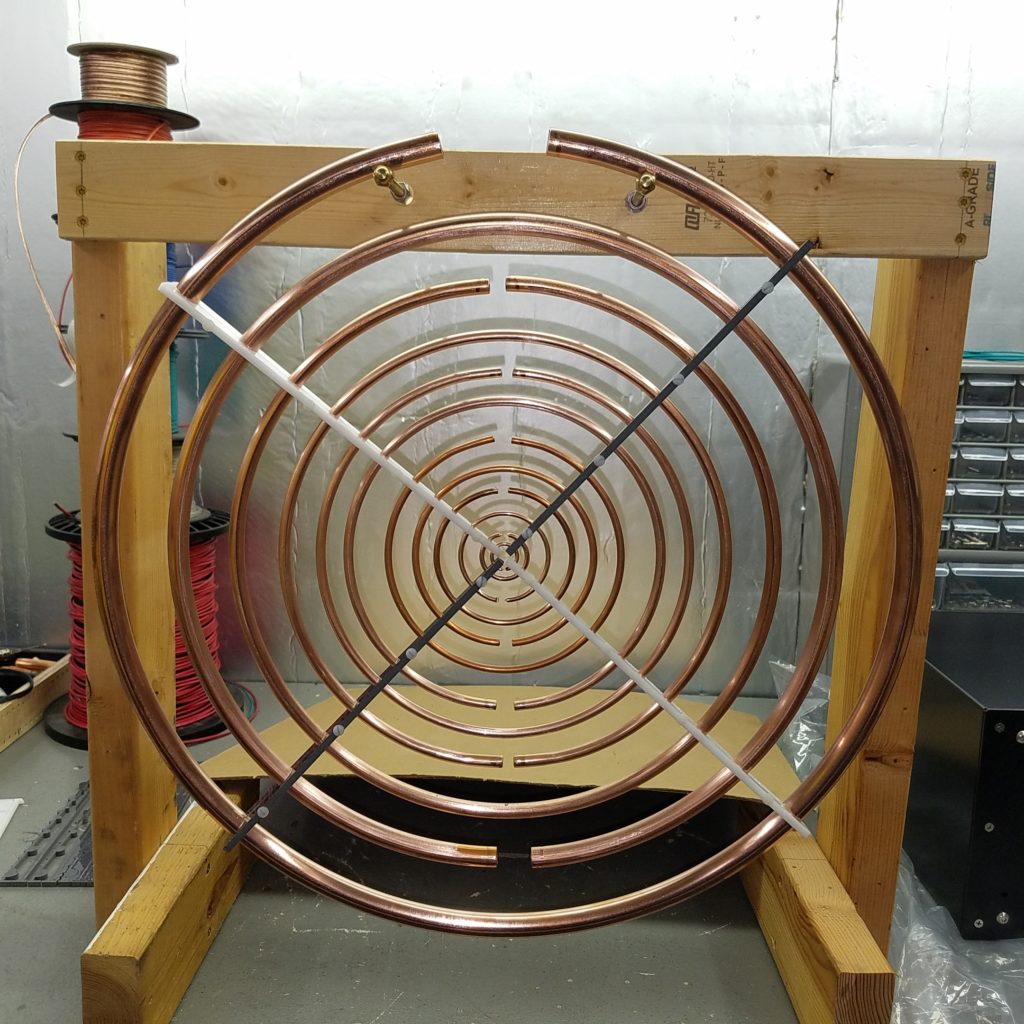
What you see are two colors of strips. The white is UHWM, which is one of the best dielectric materials, but it is not that ozone resistant. So we’re going with the gray CPVC and are having these cut out for us by the hundreds.
Below, you can see that this works great all the way down to the center rings!
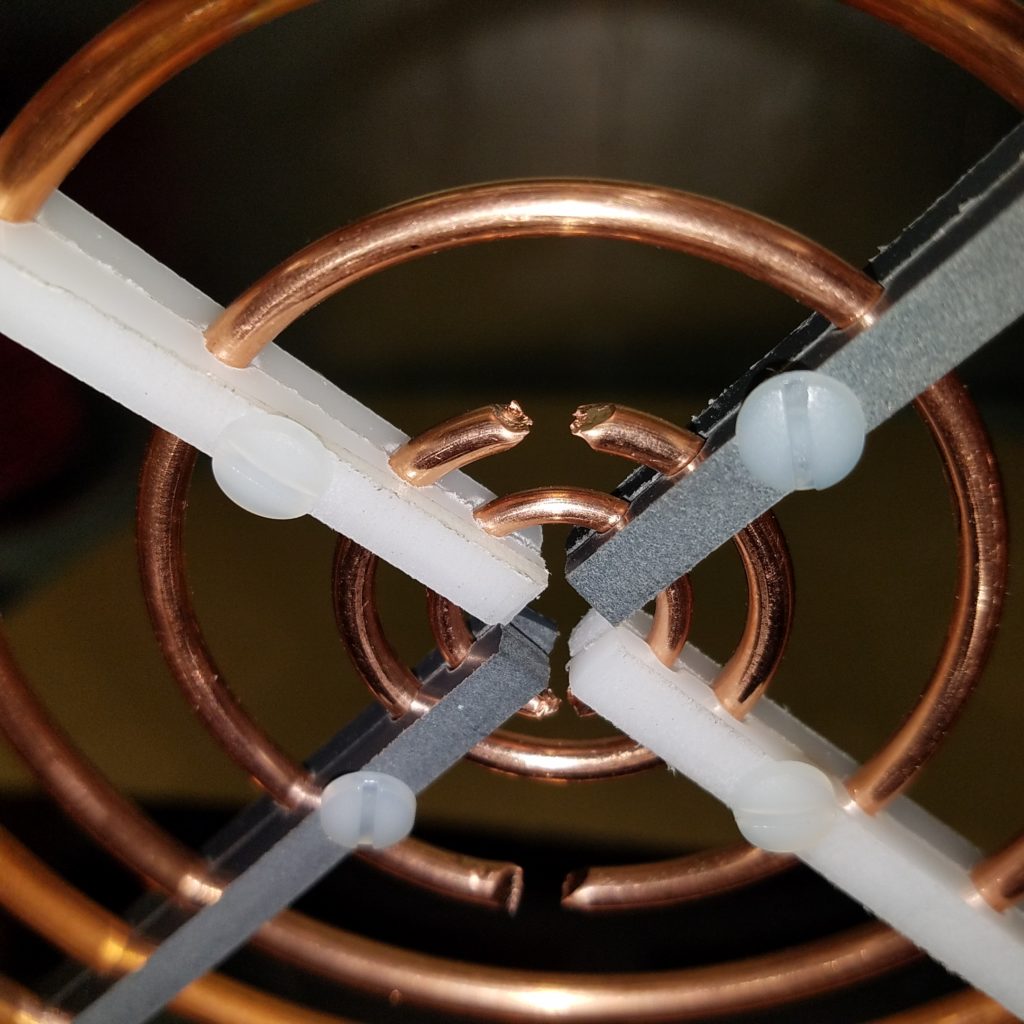
So that is the progress that we’ve made and it has been an interesting, complicated and rewarding challenge.
TIMELINE
Our timeline – we have 6 units in the current batch that are long overdue. We apologize for the delay, but you will have a MWO system that is far superior than what we thought we were going to offer. We hope to have these all out by the middle of next month. I’m personally spending as much time at Jeff’s shop as I can to work on these to speed it up as much as we can. The entire month of July was spent getting the fabrication company squared up on how we need the antenna rings bent and solving the strips to clamp down the rings.
There are 6 units in the batch after that, which we’ll start on at the end of September or Beginning of October and we plan to be able to ship those all out by the end of November. With so many parts being automated for us now, this kind of timeline is looking more realistic.
After that, there are about 6 people on the waiting list for the batch after that, which will be started at the end of November or beginning of December. We will start to accept payments for those Mid October so we can order anything needed for them and have those in our hands when we’re ready to start.
Around this time, we will have more of the system in automated production and will be looking for a local company that can start the assembly for us – probably the same company that does the Bedini RPX units 100% turnkey for us. It will then become an order fulfillment and testing process for us and we won’t have to build any of it ideally and we definitely won’t have to fabricate anything. When that happens, we will start production on some new devices that we will share at a later time. In any case, anything we manufacture after the MWO is something we can probably do blindfolded in comparison and we’re really looking forward to that!
Thank you all for your patience and support and we’ll post any new updates here.
Sincerely,
Aaron Murakami
MWO UPDATE 2018-10-27
Greetings everyone,
A lot of progress has been made – it has taken a while, but considering the massive amount of work, it has been very worthwhile to have taken this much time.
Here’s the latest…
We have a local company bending the antenna rings for us and this is the #1 most complicated part of the project to get into automated production. There are very few companies in the entire United States that are even willing to take it on let alone who can even do it to begin with and thankfully, the only one in the entire Northwest USA happens to be right here in Spokane.
For now, they’re doing rings 1 (largest outside one) through 8 and Jeff is doing rings 9 through 12 (the smallest inside ones). We’re having enough done for 20 entire MWO systems and not just the 6 that are currently pending.
We opted to take the route of long term feasibility, which took longer verses the short term satisfaction of getting a handful of units out a bit quicker. We believe in the project wholeheartedly so invested quite a bit into this aspect of the project. In the near future, they will also be bending the smaller rings for us as well. All future batches will be simpler and quicker. By spring, we anticipate that future orders in good numbers can be fulfilled in 10 weeks or less.
If you’re in the batch of these first 6 units, I deeply apologize for the delay, but we’re definitely not slacking around – we’re all in full bore and working nonstop.
October 25th, a couple days ago, is when all rings were supposed to be powder coated with a clear coat, but some of the tooling wasn’t right that they received and it’s being redone right now. Also, the form that the rings are going to be laid down into in order to confirm the rings are proper was not perfect and that is being redone as well.
This isn’t holding up all the other progress. Jeff has all the smaller rings done and are ready to hand them over to be powder coated with the rest of the rings right when they’re done.

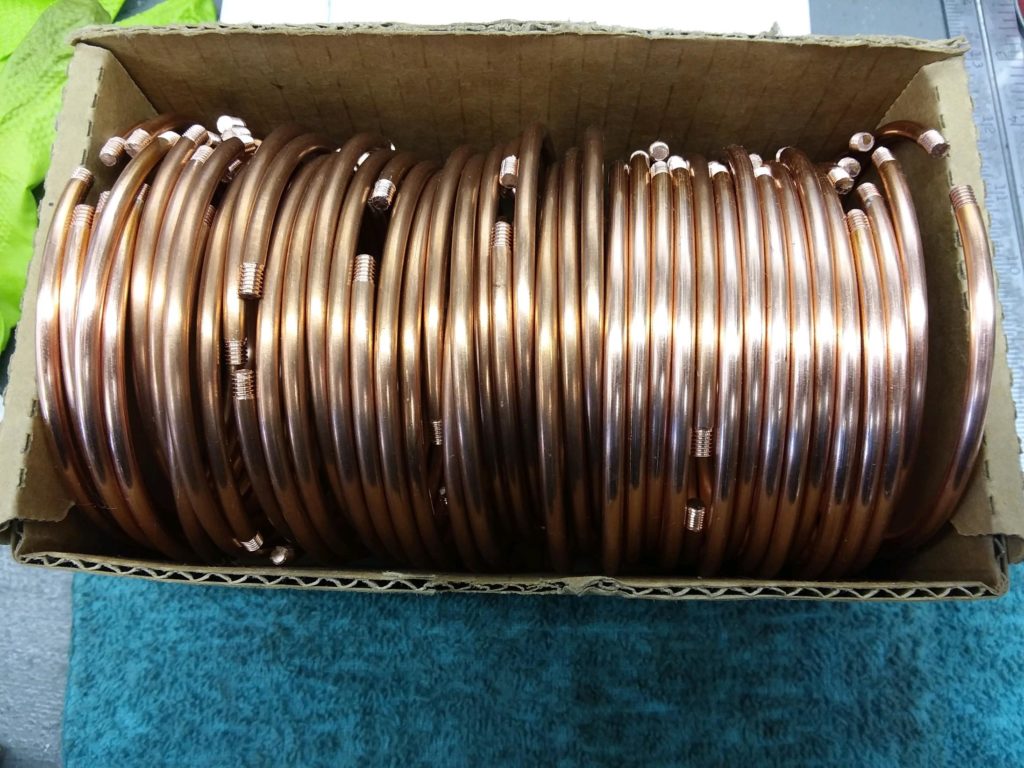
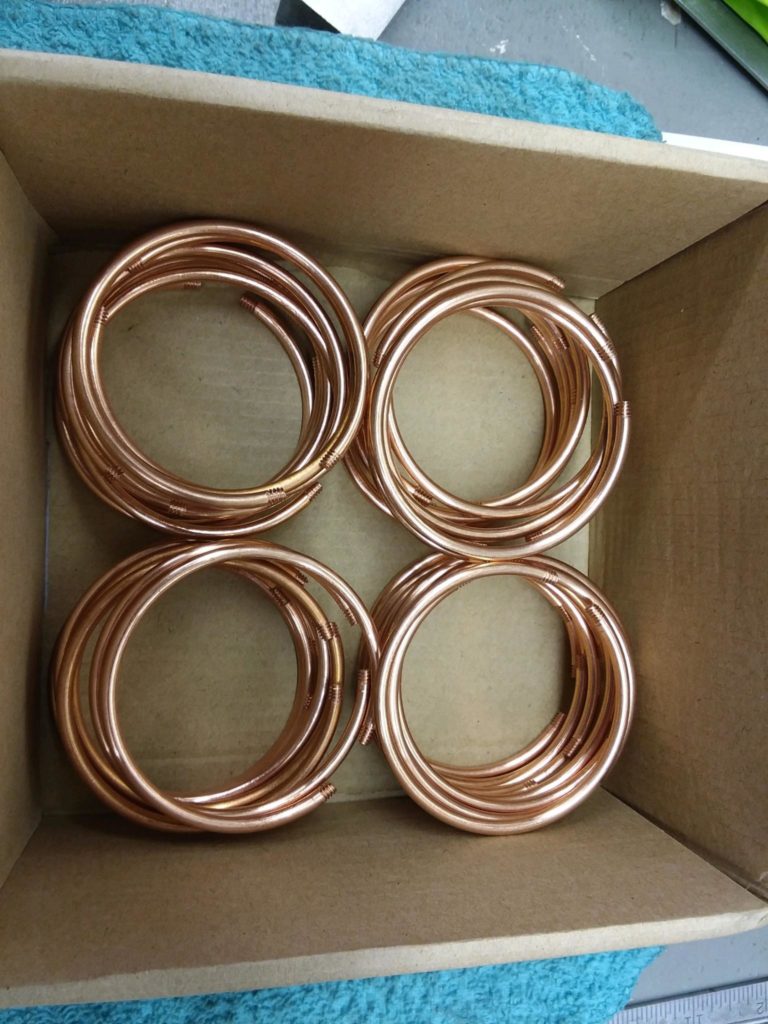
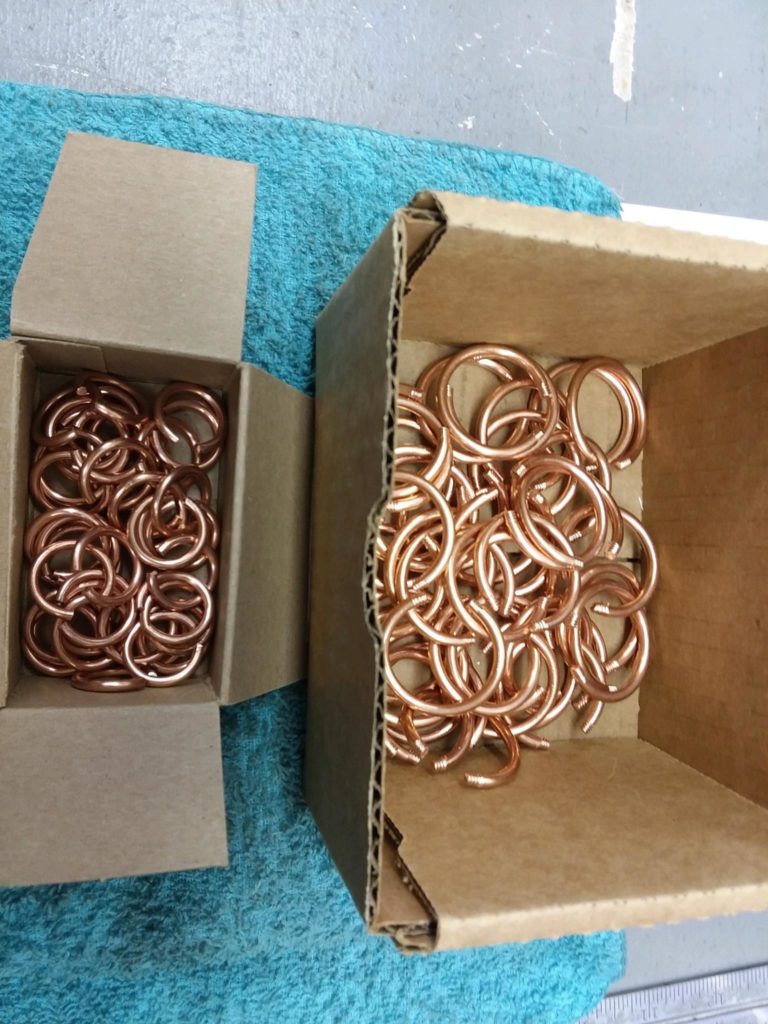
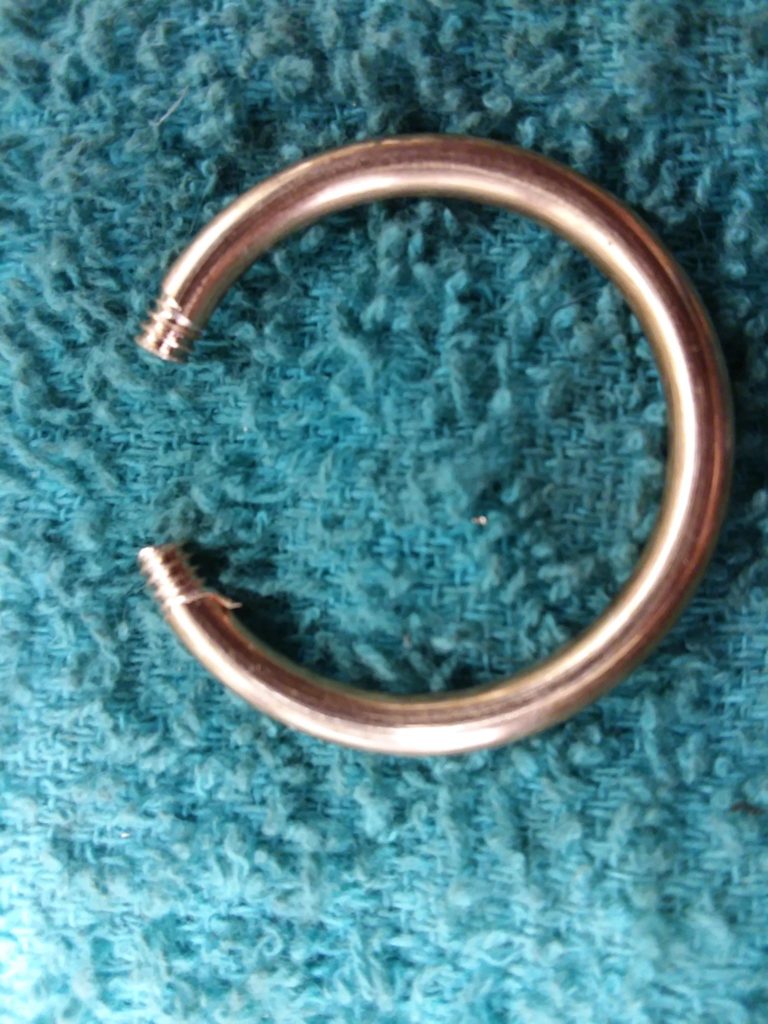
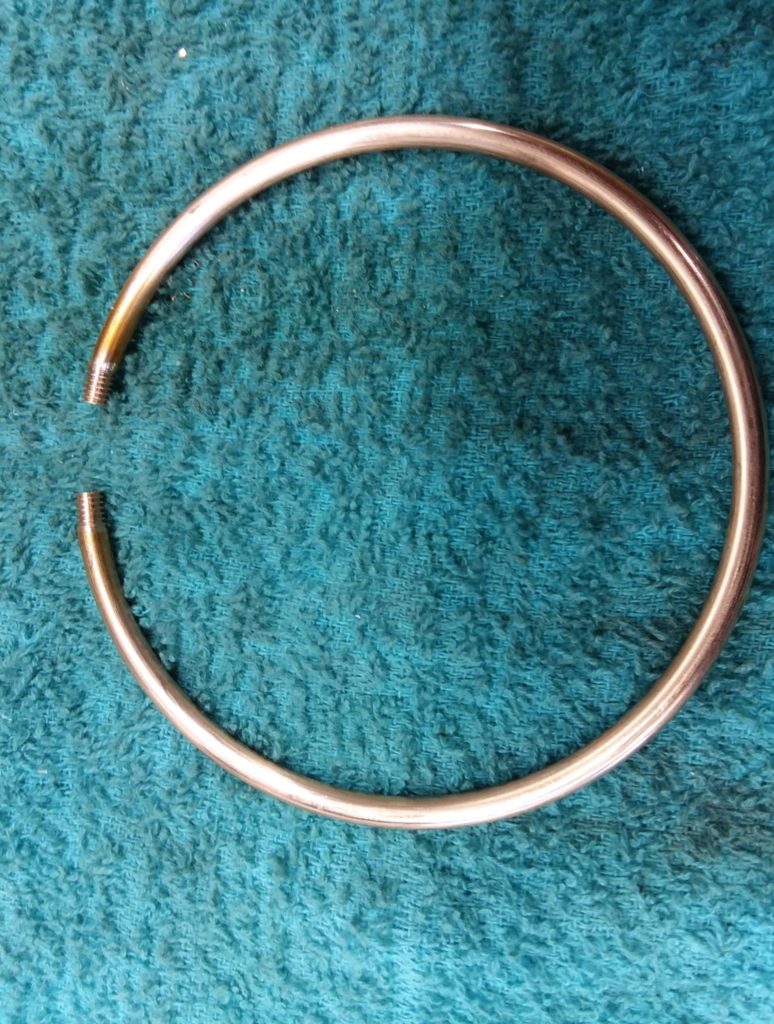
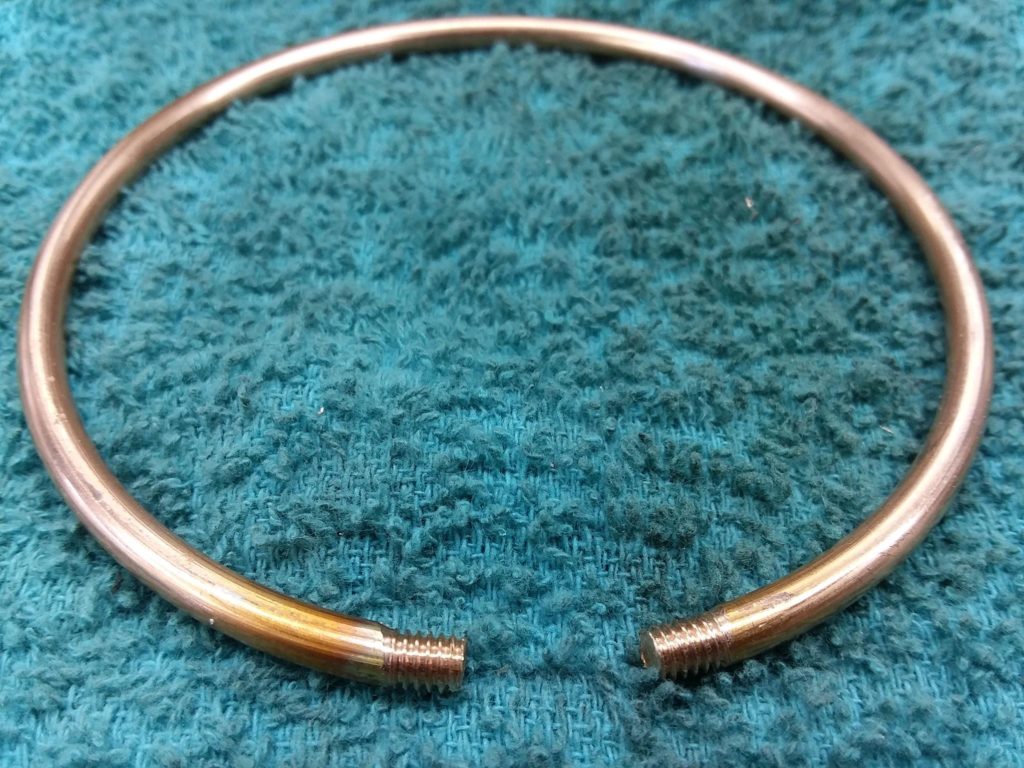
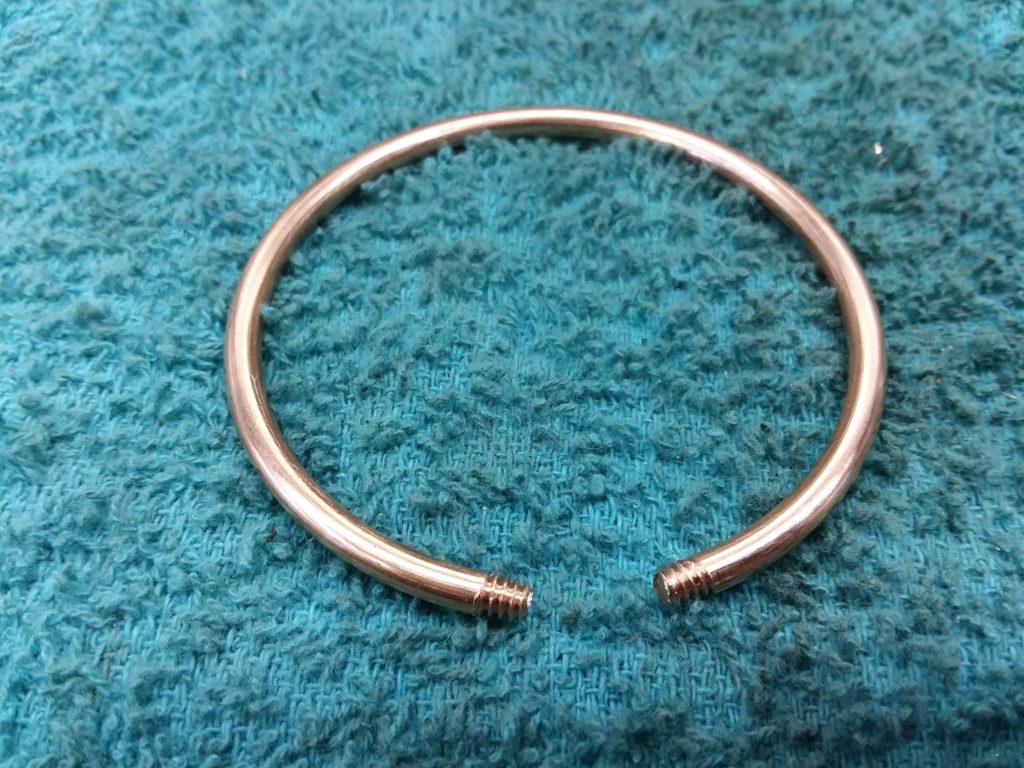
These rings looks simple, but making the diameters precise, polishing them and threading the ends for the brass balls is extremely time consuming. This is for this round (there are enough for 20 systems worth of antennas) and the company bending the larger rings for us will take on the smaller rings after the 20 current systems. Of course these are all done manually one by one at this time, but they will be done for us next time.
We’ve perfected the dimensions of the spark gap boxes and air ducts, which are 3D printed. The cases are produced for us and each one is exact so one design will work perfectly on all. This was a challenge to get them just right, but we finally got it. The tolerance for the dimensions are within 0.01″, which is pretty tight for something like this.

In the last major update, we showed you the plastic strips that are to hold the rings together. The original plan was to tap and thread them so a nylon screw could hold them together. This was a massive effort and will never be practical.
We are now going to have slots (clips are in the slots, which can’t be seen) in the strips for clips to be 3D printed that will hold the strips together. The design works, we just have to work out the perfect dimensions. The rings will force the gap between the strips apart just a bit so the clips have to be designed to accommodate for that. We will adjust for that once the rings are done. We will be able to perfect those fairly quickly since it only takes a few modifications to the CAD design of the clips, we’ll select the perfect material for the clips to be printed in, etc. Here are two pics to show the idea.
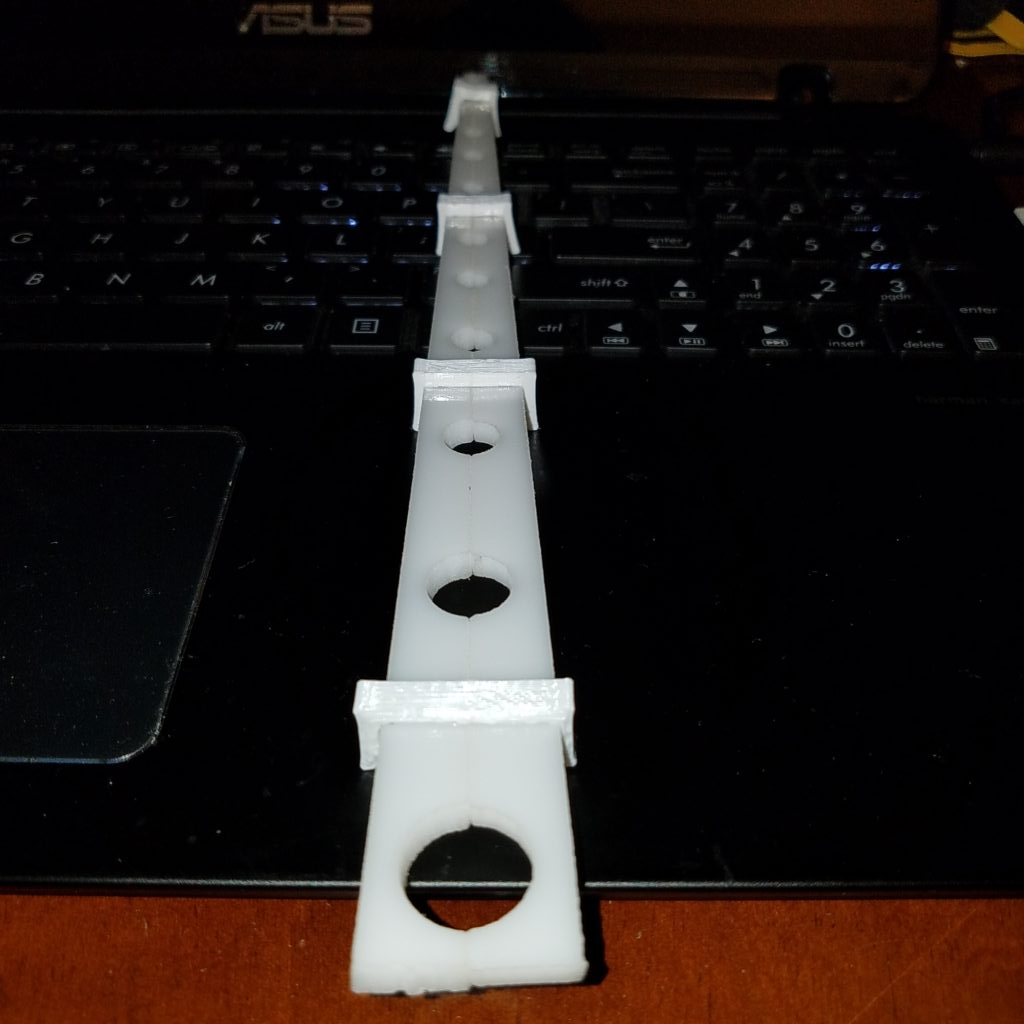

To give you an idea of how valuable this clip idea is – it took 5 days full time to lace 1 set of antennas – that is two antennas for a single MWO system. 5 days!
With these strips and clips, we have taken a 5 day job and reduced it to a 1 hour job or less!!! That is about how long it will take to lay the rings in a form, center them and clip the strips on.
Now that the spark gap boxes and air ducts are done for all 6 pending units, in a couple days, I’m heading to the shop to help Jeff assemble the pulse modulators while he is working on the coils and stands. We should be able to complete all of this fairly quickly. As soon as the antenna rings are done, hopefully in a couple weeks or less, then we’ll have everything needed to complete the 6 units.
In the last major update shown up above, it says, “There are 6 units in the batch after that, which we’ll start on at the end of September or Beginning of October and we plan to be able to ship those all out by the end of November. With so many parts being automated for us now, this kind of timeline is looking more realistic.”
So far, it looks like we’re not too far off. Originally, I thought we were going to be able to get one at a time done and ready to ship, but since it looks like we’ll have everything done except the antennas and they’ll all be done at once, we’ll probably be shipping all 6 units within a couple days apart. So far, I’m still confident that all 6 units will be ready to ship before the end of November. That is contingent on if we get the antenna rings in our possession soon enough.
After that, the next batch of 6-7 units should be all ready to ship by the end of the year or mid January at the latest.
DECEMBER 19, 2018 UPDATE
Here is the latest update and possible final one before we start shipping units!
Below is a picture of all the coils for the current 6 unit batch.
These are only 8-10 inches long, which is all that is necessary. The skinny wires are the secondary windings, which are closer to the end so they are going to be extremely close to the antenna. The antenna will have the same high voltage charge as the wire going to the antenna so the antenna will act as a “gradient shield”. What this does is help suppress the high voltage corona around the wires in the tube, which will extend the life of the wires.
It is common for many high voltage Tesla type coils to have their magnet wire oxidize and turn dark, but some steps can be taken to reduce this. It normally does not affect the operation of the coils so it isn’t a big deal if they turn dark – my own coils are slightly darkened – but we do want to mitigate the possibility to the fullest extent. Also, there is Super Corona Dope, which is the best paint on high voltage protective coating and some thick layers are brushed on to the secondaries to help suppress the corona as well. This will be the first batch of coils that have secondary windings that close to the antennas plus the Super Corona Dope coating applied to the wires. These coils will also be more efficient because any reduction in corona is an increase in output to the antennas!
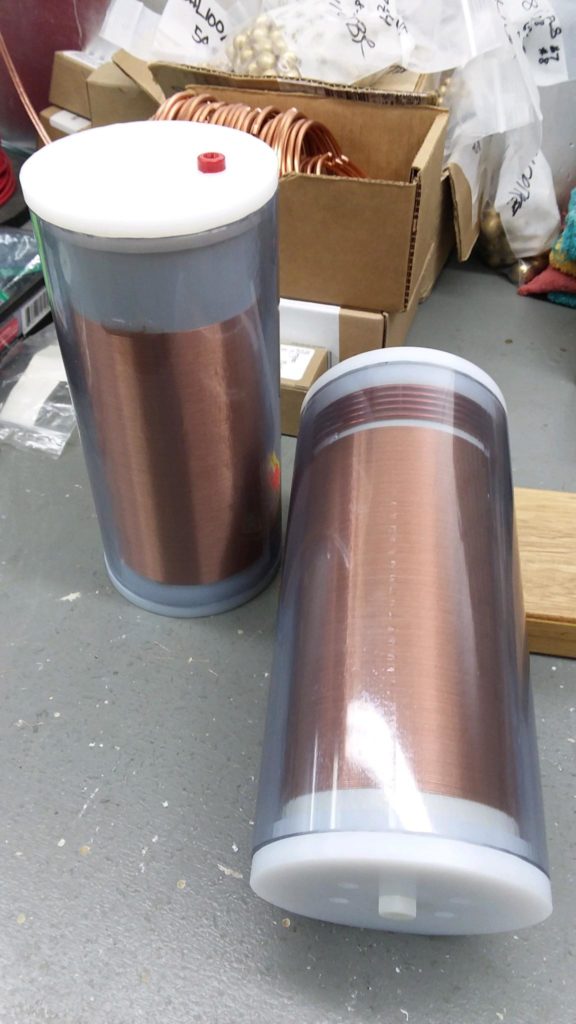
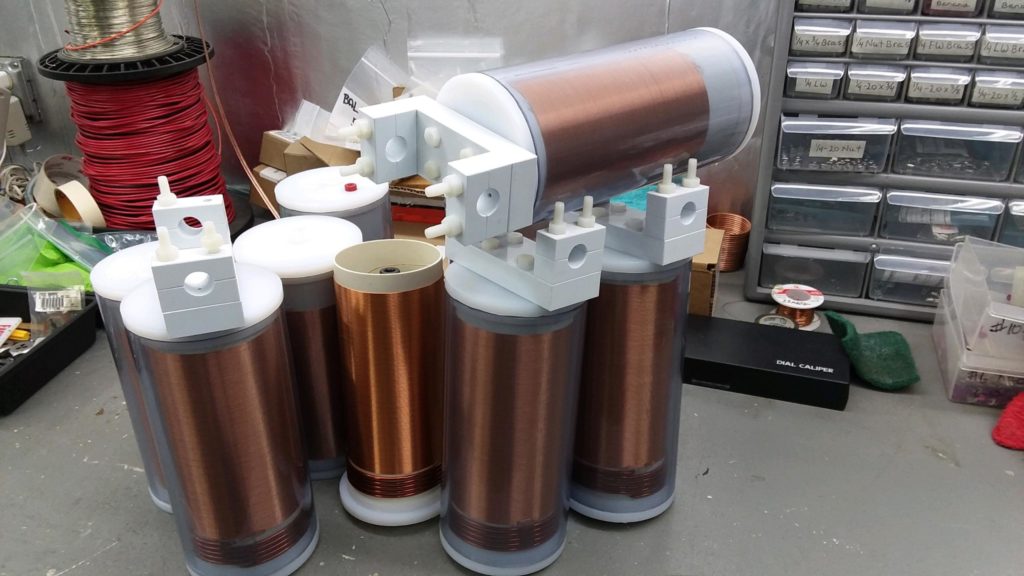
I’m at Jeff’s machine shop daily right now building the Pulse Modulator units. That is the black case that holds all the electronic components that causes the high voltage output to the MWO antennas.
Here is our timeline – please note that I’m posting your FIRST AND LAST INITIAL next to the timelines so you know when you can expect your MWO system to be delivered to the shipping company. When we take it to the shipping depot, we will put you in touch with them so you can pay for custom-boxed, motor freight shipping with a credit or debit card over the phone. Again, the average price around the country is about $550. It could be a bit more or less depending on distance.
We still have to automate about 25% of the production for these units and then we will look at having a local company do the assembly for us. When this is accomplished, hopefully by Summer of 2019, we can handle almost any quantity and have them ready in 8 weeks or less.
Thank you to all of you who have been very patient with us while we worked out the manufacturing automation for the MWO systems. There are been countless updates and upgrades to the MWO system, most are invisible, but you are definitely getting a MWO system that is far superior to what we could have offered if we put expediency ahead of quality. Our goal is to create these systems to last so they will be worthy of Heirloom status. We will continue to simplify the manufacturing process while increasing the quality at the same time. The last 14 months has been very challenging and rewarding for all of us!
Once the MWO systems are a bit more automated, we will work on other products (there is nothing we could build that is as complex as the MWO – so it is all downhill from here!!!) Projects that need the machine shop are like Bedini motor kits and related.
A few projects that I’m working on right now, which I’m able to develop at my home lab:
LIGHT THERAPY CONTROLLER – There is a red/infrared light controller that will be a part of a universal system. It will use the same battery and signal generator that comes with the RPX Sideband Generator combo kits available at http://sidebandgenerator.com. I have 20 years experience with pulse LED therapy devices and worked with some of the pioneers in this industry before 95% of the current manufacturers were ever involved. The goal is to provide various peripheral devices that can be plugged into the master control unit. This may be hand held devices, pads, face masks and so on. Anyone that already has an RPX combo will already have a battery and signal generator that will work. The prototypes already work perfect and I expect to make these available by Spring or sooner. Since there is infrared, I can make GRAS claims without FDA approval. GRAS = Generally Recognized As Safe. That includes, relaxation of tight muscles, improved circulation, temporarily relieve pain and a few other claims. Energy balancing claims are also permitted. There are many other benefits that I may delve into but at a more appropriate time. There is a Wellness category of claims and I’m looking into how it applies to these devices. In 1981, an aerospace engineer created the first LED device for healing and it was for a famous horse doctor. A medical doctor (Charles T. McGee, M.D.) and qigong master Roger Q. Estes) I worked with in the late 90’s and early 2000’s were close associates with that engineer and horse doctor so my experience with these devices and what works and what doesn’t work goes right back to the very pioneers who invented the LED therapy device modality to begin with. I believe my experience can provide a valuable contribution to world of LED healing devices.
RPX SIDEBAND GENERATOR LINEAR AMPLIFIER – The Bedini RPX Sideband Generator’s output is around 1.5 watts and is extremely effective because of the pump wave. That is a low frequency square wave that the high frequency sideband Rife Frequencies piggy back on. That allows deep penetration and is the only valid way an electrode based Rife machine can possibly work. Otherwise, the high frequencies are simply trickle over the skin (skin effect) and don’t get to where they want to go. The reports of effectiveness with the stock unit is mind blowing and you learned some of this at the last conference if you went and that will not be released to the public. I can’t make claims but others are free to share their stories. We have gotten many requests for an amplifier and I have replicated Bedini’s amplifier that was included in a higher power unit he built for me, which has around 10-12 watts output. That is roughly 6-8 times more powerful. The problem with all current RPX units is that the pump wave cannot get through the amplifier when it is amplifying the high frequencies. It was thought that an amp would be useless for all the RPX units that have been sold for the last three years, which has the pump wave and high frequencies tied together on the output. I know what John Bedini’s thought process on this was because we talked about it and I studied his linear amplifier designs for the RPX. I appear to have discovered something that went unnoticed – I now have prototype amps that all RPX units can be plugged in to that allows the pump wave to exist on the output and they work perfect! The efficiency of my amps are about 30% above Bedini’s for the same input and same design. The amps I built might be a bit too powerful so after Paul Babcock can help me with some final verification of the power readings, I’ll choose what power level will be in the final design that goes to production.
S5A12 – 5 amp 12 volt solar charge controller. With the right solar panel capability and enough light, these charge controllers will push the batteries where they need to go in order to bring them to a proper topping charge, which is different from conventional belief. This gives the batteries a theoretical infinite life cycle span because on each charge cycle, the chemistry is revered to like-new. John Bedini only built one S5A12, which I tested thoroughly on a local school campout where I volunteered to teach simple solar energy classes. The S3A12 was the most popular one we offered when John was still building them and we never had a chance to put the S5A12s into production. The prototypes I made replicate John’s results perfectly and I also built them with surface mount components as well. That means I will never have a production problem with them. For nearly 10 years, Peter Lindemann and I were in a chronic 3 month back order situation (literally for almost 10 years straight) because we sold all of John’s chargers way faster than his company could build them. They were worth the wait, but with surface mount components, I can easily have hundreds of units in my hands in 4-6 weeks flat. The same local company that manufacturers the RPX units for me will be building these. I expect to release the S5A12 by spring as well. I will be working on the final designs for a 20 amp 12 volt system after the S5A12.
There are other projects in the works, but the above 3 have prototypes that have been extensively tested. By the end of 2019, I expect to have 10-12 products into full bore production. That’s the latest update – if you have any questions, please reply the email that had the link that brought you here.
Happy Holidays and have a Happy New Year!
Aaron Murakami
Your initials will be posted below if you have pre-paid for a MWO machine – each first and last initial is unique so if you pre-paid and you see your initials, they are your initials and there is no possibility that the initials are for someone else. The order that the units will be ready are in order that the payments were received:
TARGET DATE TO DELIVER YOUR MWO TO THE SHIPPING DEPOT:
20 UNITS ARE AVAILABLE FOR PURCHASE – CONSTRUCTION WILL BEGIN AT THE END OF JULY, 2019 AND 4 PER MONTH WILL BE COMPLETED. THE FAST YOUR ORDER, THE EARLIER YOU WILL RECEIVE YOUR UNIT.
PRIORITY AVAILABILITY WILL BE OFFERED TO ATTENDEES OF THE 2019 ENERGY SCIENCE & TECHNOLOGY CONFERENCE.

